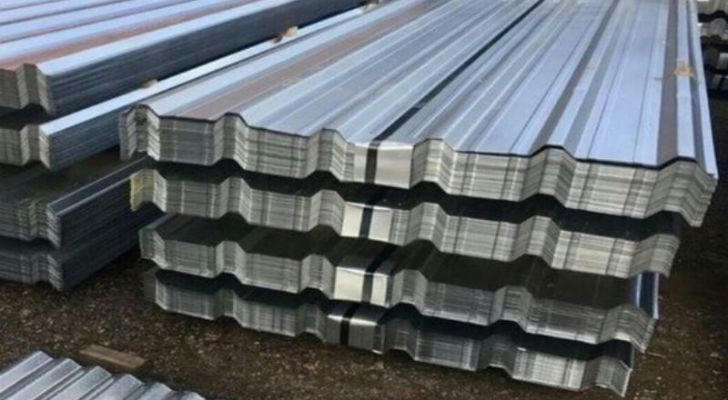Roof Ready: How to Get a Sturdy, Affordable Roof Over Your Head
Imagine waking up every morning knowing your home is protected by a rock‑solid roof that looks great, lasts for decades, and didn’t cost a small fortune. In the U.S., replacing or installing a roof is one of the most critical home improvements you’ll make. Yet, with smart planning and realistic expectations, you can keep your costs surprisingly low without sacrificing quality. Here’s your complete guide to American roofing—how it works, what it costs, and why it’s worth every penny.

1. Why Your Roof Matters
Your roof isn’t just shingles and underlayment—it’s your home’s first line of defense against rain, wind, snow, and sun. A well‑installed roof:
Protects Your Investment: Prevents water damage, mold, and structural decay.
Boosts Energy Efficiency: Modern materials and proper insulation can lower heating and cooling bills.
Enhances Curb Appeal: A fresh roof can transform your home’s appearance and raise its resale value.
Provides Peace of Mind: No more sleepless nights worrying about leaks or storm damage.
2. Roofing Materials: From Budget to Bespoke
Choosing the right roofing material is crucial. Here are the most common options, from wallet‑friendly to high‑end:
Asphalt Shingles
Cost: $5,000–$12,000 for a typical 2,000‑sq.‑ft. roof
Pros: Affordable, widely available, easy to install.
Cons: Lifespan of 15–25 years; can fade or curl in extreme heat.
Metal Roofing
Cost: $8,000–$20,000 for similar size
Pros: Lasts 40–70 years, excellent at shedding snow, fire‑resistant.
Cons: Higher upfront cost; can be noisy in rain if not properly insulated.
Wood Shakes or Shingles
Cost: $10,000–$25,000
Pros: Natural look, good insulation.
Cons: Requires regular maintenance; not ideal in fire‑prone areas.
Synthetic (Rubber, Plastic, Polymer)
Cost: $7,000–$15,000
Pros: Lightweight, durable, mimics slate or wood.
Cons: Newer product lines—long‑term performance still being evaluated.
Slate or Tile
Cost: $15,000–$50,000+
Pros: Ultra‑durable (75–100+ years), luxurious appearance.
Cons: Heavy, expensive, requires reinforced roof framing.
3. Real‑World Cost Breakdown
A. Upfront Investment
Average Roof Replacement Cost: Around $8,000 for a standard asphalt shingle roof on a 2,000‑sq.‑ft. home, with typical ranges from $5,100 to $11,000
Budget Option: Small homes or partial re‑roofs can start as low as $4,000–$6,000, especially during off‑peak seasons when contractors offer discounts.
Premium Materials: If you opt for metal or synthetic shingles, plan on $10,000–$20,000. High‑end slate or tile can exceed $30,000, though these materials often last a lifetime.
B. Regional Variations
Northeast & Pacific Northwest: Expect to pay 10–20% above the national average due to higher labor costs and stricter building codes for snow loads.
Sunbelt (South & Southwest): Milder climates and abundant roofing companies keep prices 5–15% below average.
Midwest & Mountain States: Mid‑range pricing, though steep roofs or remote locations can add 10–15% to labor expenses.
C. Long‑Term Value
Energy Savings: Upgraded insulation, reflective shingles, or cool‑roof coatings can trim energy bills by 5–15% annually.
Longevity: Asphalt shingles average 20 years; metal and synthetic last 40+ years—meaning fewer replacements and long‑term savings.
ROI: A new roof recoups about 60% of its cost at resale, according to industry studies
4. Factors That Drive Costs
Several variables can push your project’s price up or down:
Roof Pitch & Complexity: Steeper, multi‑gable roofs require more safety equipment and labor, increasing costs by 10–30%.
Removal vs. Overlay: Stripping old shingles adds $1,000–$2,500. Overlaying can save money but may void warranties and hide structural issues.
Underlayment & Flashing: Upgrading to synthetic underlayment or premium flashing materials adds $200–$800 but boosts durability.
Permits & Inspections: Local regulations can tack on $200–$600 in permit fees.
Warranty & Brand: Choosing a top‑tier shingle brand or extended labor warranty may increase materials cost by 10–15%, but provides peace of mind.
5. Installation Tips for Maximum Value
Get Multiple Quotes: Aim for three to five detailed bids. Compare not just price, but materials, labor warranties, and cleanup policies.
Timing Is Everything: Late fall and winter often yield off‑season discounts of 5–10%. Avoid peak spring/summer when demand is highest.
Inspect the Decking: A good roofer will check and replace any rotten plywood before installing shingles—worth the extra $500–$1,000 to avoid future leaks.
Opt for Energy‑Efficient Options: Reflective shingles, proper attic ventilation, and quality insulation pay dividends in lower utility bills.
Maintain Regularly: Annual roof inspections and gutter cleanings (around $100–$200 per visit) extend the life of your investment.
6. Maintenance & Longevity
Routine Inspections: Look for missing or curling shingles after storms. Early detection prevents water intrusion.
Clean Gutters & Downspouts: Blocked gutters can cause water backup under shingles, leading to rot.
Trim Overhanging Branches: Reduces moss growth and prevents limb damage during storms.
Address Repairs Promptly: Fix small leaks or damaged flashing immediately—minor repairs ($150–$400) are far cheaper than full replacements.
7. Slightly Exaggerated—but Totally True!
“Lifetime Protection!” With a metal or slate roof, you might outlive your roof—talk about peace of mind!
“Energy Bill Ninja!” A cool roof can sneak up on your utility bills and slash them by double digits.
“Curb Appeal Superstar!” Your home will look so sharp, even the neighbors will stop by to ask for contractor info.
Conclusion
A new roof doesn’t have to break the bank. With entry‑level projects starting around $4,000 and the average asphalt replacement hovering near $8,000, affordable, high‑quality roofing is within reach for most Americans. By understanding material options, regional price trends, and key cost drivers, you can secure a durable roof that protects your home, enhances energy efficiency, and boosts resale value. Ready to get roof‑ready? With smart planning and the right team, you’ll soon enjoy the comfort and security of a top‑notch roof—without the sticker shock.
